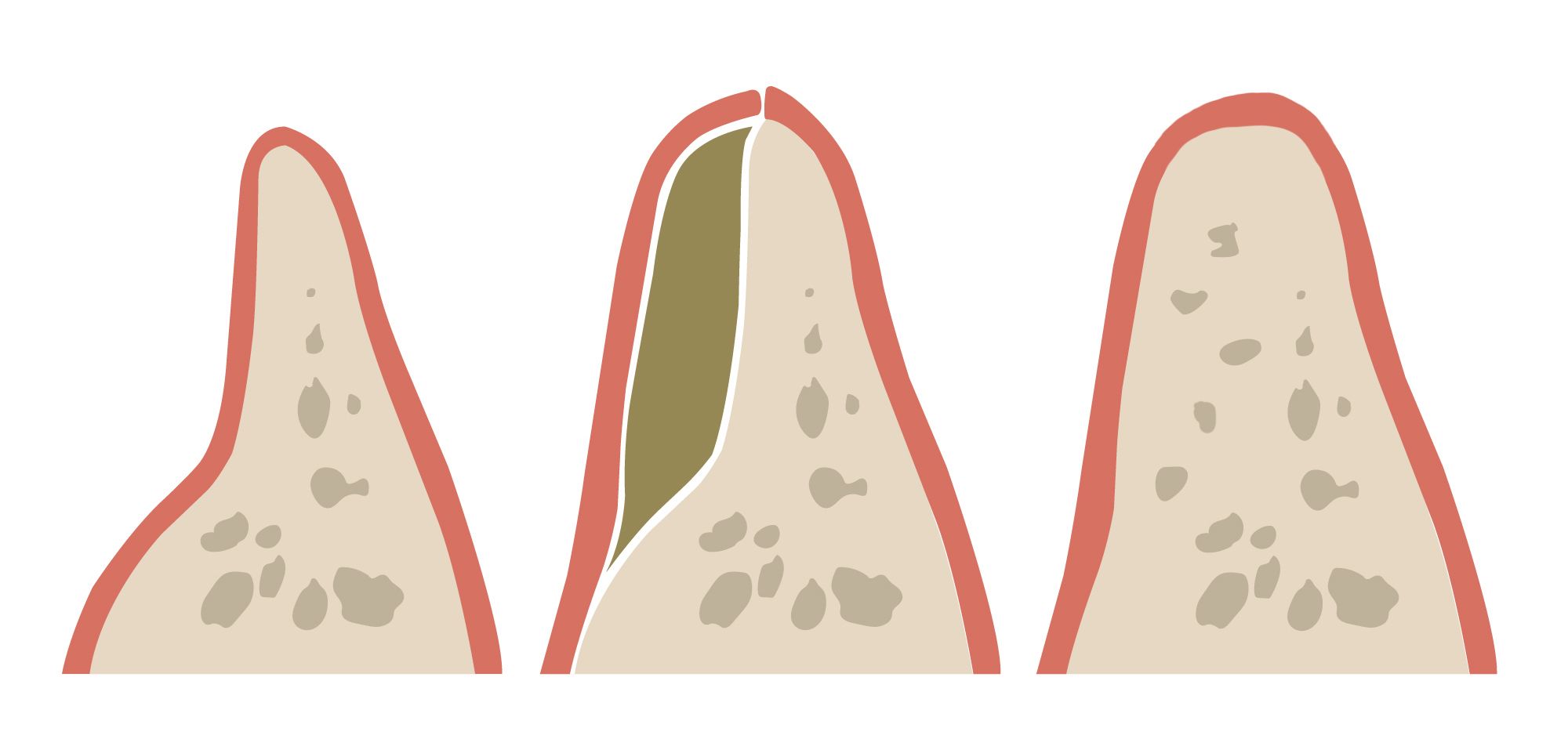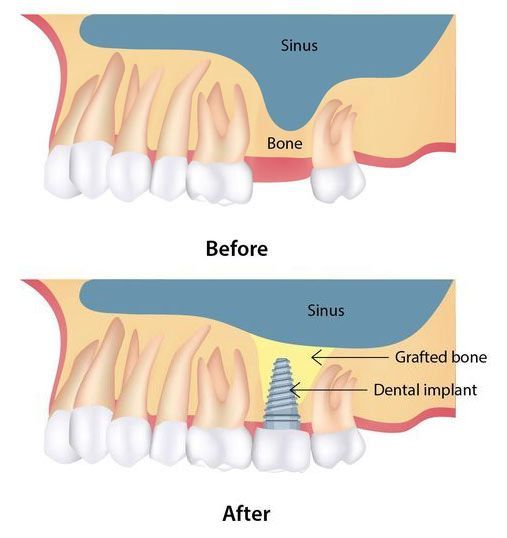
Oral Surgery

ORAL SURGERY: DENTAL IMPLANTS, BONE GRAFTING, AND MORE
In addition to tooth extraction, Dr. John M. Pinnix IV and Dr. George A. Betancourt can place dental implants and perform any necessary bone grafting or sinus lift procedures. We are proud to provide our patients with the convenience and peace of mind that comes with being able to receive all these treatment under one roof, with one doctor overseeing your care. To learn more about the state-of-the-art oral surgery procedures we offer, please contact us today.
We are proud to provide a “one-stop shop” for our patients to receive most or all of the dental procedures they need.

Comprehensive Restorative Care
From the placement of a single dental implant to providing a complete full mouth reconstruction, we use the latest technologies to ensure successful, long-lasting results. Meanwhile, we offer sedation dentistry options to help you relax and stay comfortable throughout your treatment. Your comfort and satisfaction are our priorities before, during, and after your procedure.
Dental Implant Surgery
Dental implants are considered the best solution for missing teeth not only because they provide the ultimate support for dentures and other restorations, but because they are the only restorative dentistry treatment that can prevent jawbone atrophy (shrinkage) following tooth loss. Drs. Pinnix and Betancourt perform all stages of dental implant treatment. Our doctors will carefully plan your procedure, place the implants, and restore them with a crown, bridge, or denture once you have healed. This procedure typically requires two surgeries over the course of four to six months. Receiving implants becomes a far more convenient and streamlined experience when one practice performs every stage of treatment.
Bone Grafting
Some patients who have waited to address missing teeth require bone grafting prior to having their implants placed. Bone grafting restores a stable base for the implants by transplanting donor tissue to your jaw. Through bone grafting, or bone augmentation, your dentist may also be able to restore your candidacy for dental implants. Our dentists are highly trained and our advanced technology can reduce your risks and help to ensure optimal oral health.
Bone grafting is a relatively simple procedure, and most patients return to their normal activities the day after surgery. If the graft is minor, it can be performed at the same time as the implant surgery. During your consultation, we will conduct an in-depth examination of your jaw to determine if bone grafting is necessary.

Do You Require a Bone Graft?
Your tooth roots play several important roles, holding your teeth in their sockets. However, they also help to preserve your jawbone. Each time your teeth are placed under stress, whether you are eating, speaking, or making unconscious movements, the roots will send regenerative signals to your jaw. These signals promote the growth of new tissue, helping to replace the cells lost naturally through daily wear and tear. If you have been missing teeth for some time, jawbone recession may have dramatically altered your jawbone size, health, and appearance.
A bone graft can restore your bone levels for improved oral health. Because you must have a strong jawbone to support implants, bone loss can affect your candidacy for dental implants treatment. With bone grafting, we can build a strong base for dental implants. Dr. Pinnix or Dr. Betancourt will use our digital x-rays to look for bone recession and determine your candidacy for bone grafting.
The Bone Grafting Procedure
Before a bone graft, your doctor will create a personal treatment plan. Using the x-rays of your jaw, he will determine exactly where the bone has receded and how much tissue to replace. We will begin your surgery by administering sedation, so you will experience virtually no discomfort. We offer several types of sedation, but typically recommend a deeper form for this procedure.
Once you are comfortable, Dr. Pinnix or Dr. Betancourt will create an incision over the recessed area. Then he will place new bone tissue, using small screws or anchors to hold the graft in place. We use three types of jawbone grafts.
- An autograft utilizes your own tissue from another part of your body. To perform an autograft, your dentist will usually need to remove tissue from your chin or hard palate.
- An allograft uses human tissue from a donor.
- A xenograft uses animal tissue that is comparable to human bone.
The right type of graft for you will depend on your health needs and personal preferences.
Once Drs. Pinnix or Betancourt have completed the graft, they will close up the incisions, often using dissolvable stitches. During the next four to nine months of healing, the new bone tissue will integrate with your jaw structure. When you have completely recovered, we can proceed with the next step of your treatment, such as implant placement. Conveniently, we can complete all stages of implant dentistry under one roof.
Advanced Dentistry of Blakeney can perform highly precise, effective bone grafting procedures to rebuild your jaw and oral health.
Risks and Benefits of Bone Grafting
All surgeries carry some risk of infection. In addition, there is a chance that the new tissue will fail to integrate with your jaw. However, with our precision and adherence to hygiene standards, these risks are negligible.
In contrast to the low risks of bone grafting, the procedure can have tremendous benefits for your oral health and function. By rebuilding your jaw, Drs. Pinnix and Betancourt can prevent further tissue degeneration and tooth loss. They can also restore your candidacy for implants, the most durable, stable, and realistic option to replace missing teeth. Finally, bone grafting can even improve your appearance and self-confidence by restoring the natural shape of your jaw and face.
Sinus Lift
Some patients' sinuses lay too close to the treatment site, and without special preparation, an implant would disturb the soft tissues. If x-rays reveal that there is not enough room in the upper jaw to safely accommodate a dental implant, a sinus lift procedure, or subantral graft, can raise the sinus floor, creating room for the implant post. As a fellow of the International Congress of Oral Implantologists, Dr. Betancourt can perform safe and effective subantral grafts.

A sinus lift adds bone tissue to the upper jaw so that you can safely receive a dental implant.
Is a Sinus Lift Right for You?
During a sinus augmentation, your sinuses are gently lifted and bone is added between your jaw and sinus floor. There are a variety of reasons a sinus lift may be necessary. For many patients, gum disease or untreated tooth loss can lead to tissue deterioration in the jawbone. When this occurs, the sinus can expand to fill the space, making implant placement unsafe.
Implant placement in the upper jaw can present many issues even among patients who have not suffered bone recession. In general, the back of the upper jaw has much less bone than the lower jaw. Meanwhile, some have naturally low or large sinuses that rest too close to the upper jaw for implant placement.
Your Sinus Lift Procedure
During an initial consultation with Dr. Betancourt, he can examine your oral health and determine if bone grafting or other preparatory procedures are necessary. We can take a series of scans and x-rays to assess the density of your jaw and the location of your sinuses. Before the procedure, we will ensure you are comfortable. We offer multiple forms of sedation dentistry, including oral conscious and intravenous (IV) sedation.
Once you are comfortable, Dr. Betancourt will create a small window in your jaw to access your sinuses. Then he will gently lift the sinus floor so it is no longer touching the upper jaw. Before closing the window, he will pack the area with grafting material to maintain the new location of the sinus and create a strong base for the implant posts.
Recovery
Many patients experience minor swelling in the treatment area after a sinus lift. You may also experience bleeding. It is important not to blow your nose or sneeze forcefully for the first few days after your procedure, as the force could cause the grafting material to shift. You will need to visit Dr. Betancourt about seven to 10 days after the surgery to ensure everything is healing properly.
Once the bone graft has fully integrated, Dr. Betancourt can perform implant placement surgery.
For most patients, it takes six to nine months for the grafting material to integrate with the natural jawbone tissue. We will perform periodic scans to monitor the integration process. Once the bone graft has fully integrated, Dr. Betancourt can perform implant placement surgery.


